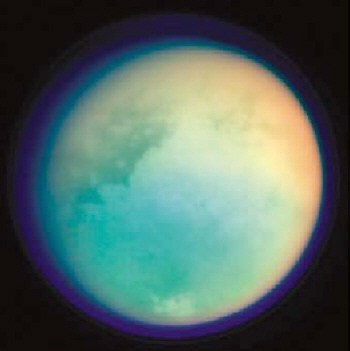Have you ever wondered what it must have looked like to be aboard the Huygens probe as it hurtled towards the surface of Titan -- Saturn's largest moon -- in January last year? All is now revealed with a highly realistic new movie of the dramatic descent, released by the European Space Agency (ESA), NASA and the University of Arizona. The movie shows the probe's plunge through Titan's thick orange-brown atmosphere before landing on a soft, sandy riverbed. The film was put together from data collected by the Descent Imager/Spectral Radiometer (DISR) instrument during the probe's descent, which lasted 147 minutes.

Launched in 1997, NASA’s Cassini spacecraft entered Saturn’s orbit in July 2004. In January 2005, its payload — the ESA’s Huygens probe — successfully landed on Titan after being released from Cassini on Christmas Day 2004. The first movie, which is narrated, runs for about four and a half minutes and shows what the probe saw during the 2.5 hour long descent and touchdown. Another version of this movie is unusually accompanied by a recording of Beethoven’s Piano Concerto no.4 (please see “Related Links”).
“At first, the Huygens camera just saw fog over the distant surface,” explains Erich Karkoschka, who is a team member at the University of Arizona and creator of the movies. “The fog started to clear only at about 60 kilometres altitude, making it possible to resolve surface features as large as 100 metres,” he says. “But only after landing could the probe’s camera resolve little grains of sand millions and millions of times smaller than Titan. A movie is a perfect medium to show such a huge change of scale.”
A second film is more technical and contains detailed text and graphics to explain how Titan looked to the probe during the descent and landing. Different music, modern this time, has also been added to represent the different data sets collected.
“These movies really demonstrate that the Huygens camera was very well designed for the job,” says Jean-Pierre Lebreton, Huygens project scientist and mission manager at the ESA. “They show so many different details of a landscape that covers only a tiny fraction — one-thousandth — of Titan’s surface. This makes me dream of what a possible future mission to Titan may return of this wonderful and fascinating Earth-like world.”
The Cassini spacecraft will continue to orbit Saturn for another two years and its next fly-by to Titan will be on 20 May this year.





